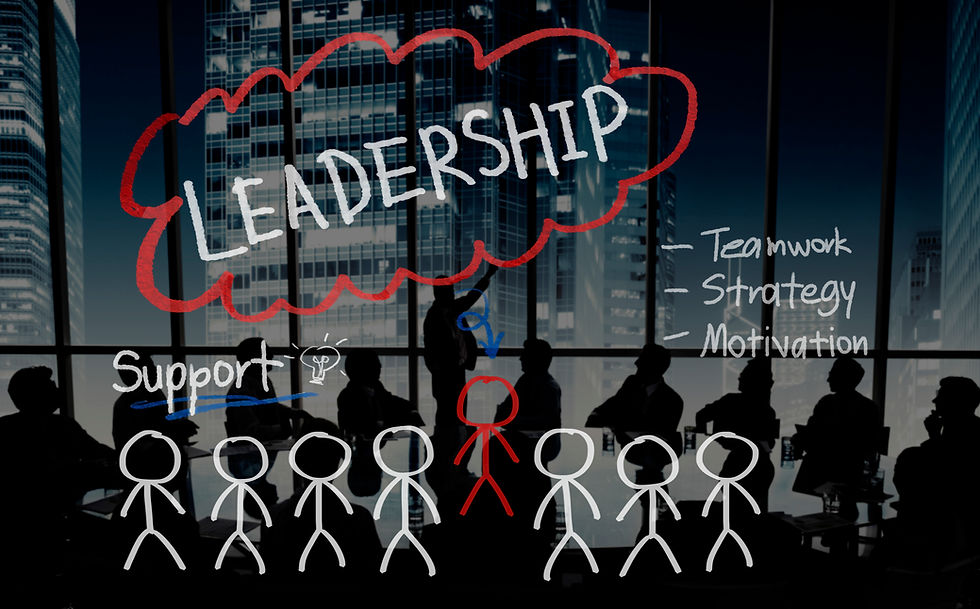Charting the Course for Sustained Success: A Leadership Blueprint in a Digital Age
- Giles Lindsay

- Aug 31, 2023
- 3 min read

Introduction
Navigating the challenges of our current and future digital age requires a comprehensive strategy. Leaders need a blueprint that guides current operations and prepares them for future challenges. Recognising that change is constant, it is crucial to have an adaptable blueprint that enables resilience and effectiveness in the face of any disruption. This is more than just a paper exercise; it's about laying down a roadmap ready to pivot when new opportunities or threats emerge.
Strategic Realignment
Leaders often need strategic adjustments influenced by trends and internal shifts. Periodic strategy reviews are not just good practice but essential. Does your current strategy still serve your organisation’s mission? Are there technologies or market changes that require updated tactics? Proactive and reactive realignment ensures you stay on course towards long-term goals. For example, consider how cloud computing has affected legacy systems. The benefits are increased flexibility, reduced costs and improved scalability. The question then becomes: How does incorporating this technology align with your existing objectives? It's vital to continuously assess the landscape to discern whether your existing goals still hold value or if they require recalibration.
Fostering Team Cohesion
Achieving lasting success is a group effort. A significant aspect of the blueprint focuses on fostering team cohesion and collective growth. Effective leadership involves mentorship and clear communication channels. Choosing the right communication platforms becomes critical, with digital tools reshaping how teams interact. Leaders are responsible for ensuring that communication platforms are user-friendly, enhancing productivity and, importantly, encouraging teamwork and collaboration. By the same token, recognising the individual strengths of team members and employing those strengths strategically can result in a team that’s more cohesive and efficient.
The Customer Journey
Understanding and optimising the customer journey holds a key place in any forward-thinking blueprint. Whether your organisation is B2B or B2C, customer satisfaction directly correlates with long-term success. Through leveraging technologies like CRM systems, it's possible to capture valuable customer insights that inform strategic goals. Focusing on the customer journey ensures that products or services not only meet but exceed customer expectations, thus building brand loyalty and trust. With this approach, leaders are well-equipped to make data-driven decisions that align customer needs with organisational objectives.
Digital Adaptation
Adapting to the digital age is not optional; it's a fundamental requirement. Making investments in technology provides a return on investment and aligns with long-term goals. The key lies not only in adopting technologies but also in selecting those that complement your strategic objectives. Data analytics and automation can significantly improve efficiency and decision-making abilities. However, they need to be integrated to align with strategies. Moreover, adopting cybersecurity measures ensures the integrity and confidentiality of data, making it a cornerstone of digital adaptation.
Leadership Evolution
Static leadership approaches can stall progress. Leaders should continuously adapt their style by learning from both successes and failures. Modern leadership often emphasises collaboration and flexibility, which are well-suited for tech-savvy teams. This continuous evolution of leadership style ensures that leaders can effectively address challenges and lead their teams through varying scenarios. To be truly effective, leaders also need to cultivate a culture of innovation and a willingness to fail fast and learn faster. The focus should be on empowering the team to be autonomous but aligned.
Conclusion
A well-charted course is essential for achieving long-term success in our modern digital world. The blueprint involves realigning priorities, focusing on team unity, embracing digital adaptations, and evolving leadership styles. Continuously revisiting and updating this blueprint is a process as new challenges arise and milestones are achieved. It serves as a living document reflecting the knowledge and collaborative work of the entire organisation. For enduring success, it is imperative that this blueprint is not static but is revisited periodically, ensuring it remains an agile tool that can navigate the changing waters of our digital age.




Comments